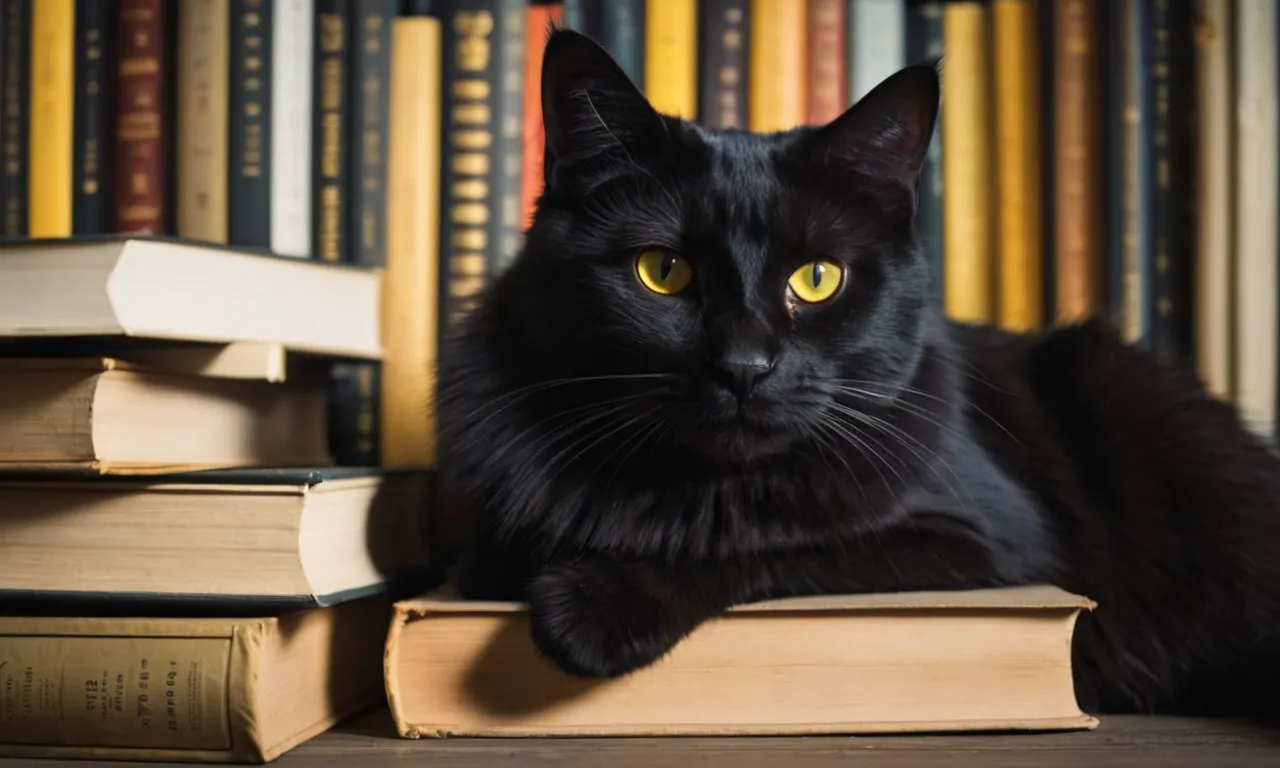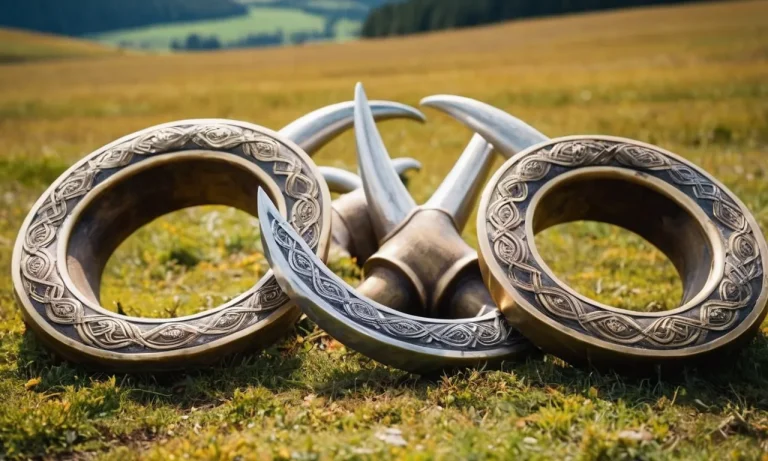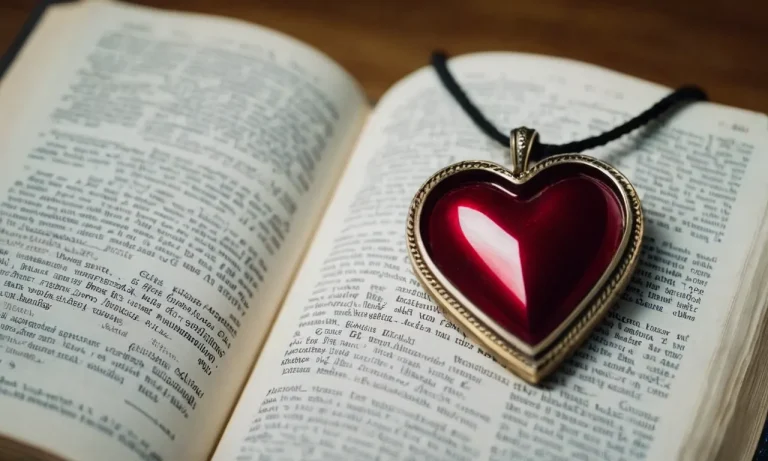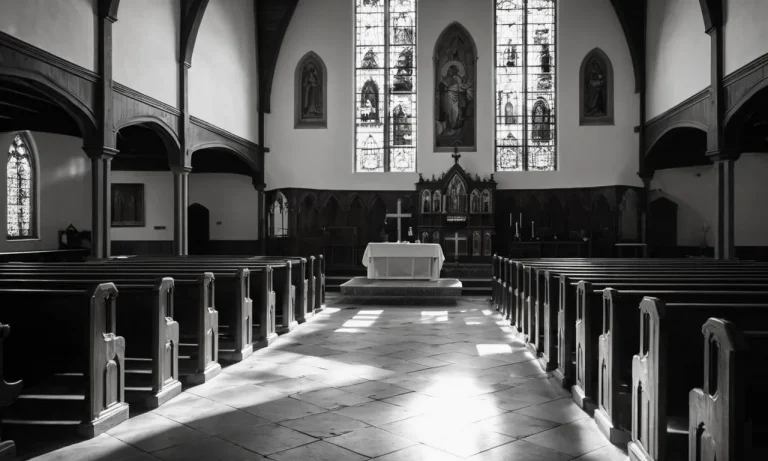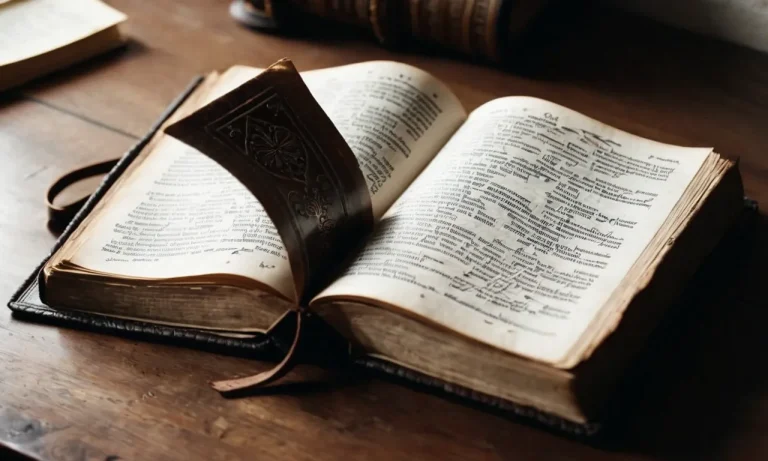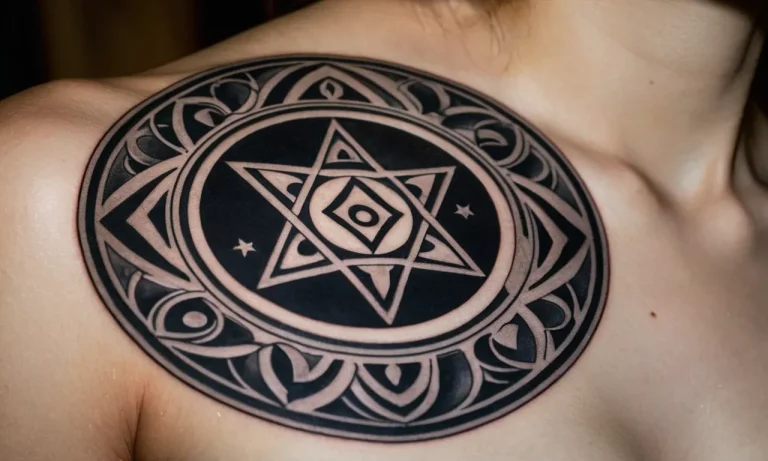Black Cat Meaning: Unveiling The Mysteries Behind This Feline Enigma
In the realm of feline folklore, few creatures have captured the imagination and sparked as much intrigue as the black cat. Shrouded in mystery and superstition, these enigmatic felines have long been associated with a myriad of beliefs, ranging from harbingers of good luck to omens of misfortune.
If you’re short on time, here’s a quick answer to your question: The meaning of a black cat is deeply rooted in cultural traditions and beliefs, with varying interpretations across different societies.
While some view them as symbols of bad luck or harbingers of misfortune, others consider them lucky charms, bringers of prosperity, and guardians against evil spirits.
In this comprehensive article, we delve into the fascinating world of black cat symbolism, exploring its origins, cultural significance, and the diverse interpretations that have shaped our understanding of these captivating creatures.
From ancient Egyptian mythology to modern-day superstitions, we unravel the threads that have woven the black cat’s enigmatic tapestry, shedding light on the beliefs, myths, and legends that have endured through the ages.
Ancient Origins: The Black Cat in Mythology and Folklore
Egyptian Reverence: Bastet and the Sacred Feline
In the ancient Egyptian civilization, black cats held a revered status, embodying the grace and power of the feline goddess Bastet. Known as the “Lady of Perfume” and the “Lady of Drunkenness,” Bastet was a multifaceted deity associated with protection, fertility, and the sun.
Her cult emerged around 950 BCE, with her most sacred temple located in the city of Bubastis. According to World History Encyclopedia, over 300,000 mummified cats have been discovered at this site, attesting to the profound veneration bestowed upon these feline companions.
Celtic Lore: Harbingers of Prosperity or Doom?
In the rich tapestry of Celtic folklore, the black cat occupied a complex and often contradictory role. While some traditions viewed these enigmatic creatures as harbingers of good fortune and prosperity, others perceived them as omens of impending doom.
Irish Central recounts tales of farmers welcoming black cats onto their land, believing they would bring bountiful harvests. However, if a black cat crossed one’s path, it was considered an ill omen, foretelling misfortune or even death.
This dichotomy reflects the intricate interplay of light and darkness, good and evil, that permeated Celtic mythology.
European Superstitions: Witchcraft and Black Cat Familiars
During the tumultuous era of the European witch trials, black cats found themselves inextricably linked to the realm of witchcraft and the occult. Fueled by fear and superstition, many believed that these felines served as “familiars” to witches, acting as their supernatural companions and conduits for dark magic.
According to History Extra, an estimated 200,000 to 1 million alleged witches were executed during this period, often accompanied by the brutal killing of their feline companions. This dark chapter in history cast a long shadow over the perception of black cats, solidifying their association with the mystical and the macabre.
Despite the varying interpretations across cultures and eras, the black cat has remained an enduring symbol of mystery and fascination. Its striking appearance and enigmatic nature have woven it into the fabric of mythology and folklore, captivating the human imagination for centuries.
Whether revered as sacred guardians or feared as harbingers of misfortune, these feline enigmas continue to inspire awe and intrigue, reminding us of the rich tapestry of beliefs and superstitions that have shaped our collective consciousness.
Cultural Interpretations: Luck, Misfortune, and Everything in Between
The black cat, a feline enigma shrouded in mystery and superstition, has captured the imagination of cultures across the globe. From harbingers of good fortune to omens of impending doom, these enigmatic creatures have inspired a diverse range of beliefs and interpretations.
Western Beliefs: Crossing Paths and Broken Mirrors
In Western folklore, black cats have long been associated with both good and bad luck. The belief that a black cat crossing one’s path is an omen of misfortune dates back to the Middle Ages, when these felines were often linked to witchcraft and sorcery.
However, some cultures see it as a sign of good luck, particularly if the cat is walking toward you. According to a Reader’s Digest article, in Germany, it’s considered lucky for a black cat to cross your path from right to left, but unlucky if it crosses from left to right.
The superstition surrounding broken mirrors and black cats is also deeply rooted, with some believing that a black cat walking over a broken mirror will bring seven years of bad luck 😬.
Eastern Perspectives: Guardians of the Household
In stark contrast to Western beliefs, many Eastern cultures revere black cats as symbols of good fortune and protectors of the household. In ancient Egypt, black cats were regarded as sacred animals, often associated with the goddess Bastet, the protector of the home.
Similarly, in Japan, the Maneki-neko, or “beckoning cat,” is a popular figurine believed to bring prosperity and good luck to its owners. These adorable feline statues, often depicted with a raised paw, are a common sight in Japanese businesses and homes 🐱💰.
Did you know that in the United Kingdom, black cats are considered lucky? According to a study by the Blue Cross charity, black cats are the least likely to be adopted, with only 49% finding homes compared to 65% of cats with other coat colors.
This superstition-fueled bias highlights the need for greater awareness and education surrounding these feline companions.
Modern Symbolism: Embracing the Black Cat
In today’s world, the perception of black cats is undergoing a transformation. While some ancient beliefs persist, many people have come to appreciate these felines for their unique beauty and companionship.
Organizations like the Black Cat Rescue are dedicated to promoting awareness and advocating for the adoption of black cats, challenging long-held superstitions. Additionally, popular culture has embraced the black cat as a symbol of mystery and intrigue, with iconic figures like the DC Comics’ Catwoman and the literary character Salem from “Sabrina the Teenage Witch” capturing the imagination of audiences worldwide 😍.
Whether seen as harbingers of luck or misfortune, guardians of the home or enigmatic companions, black cats continue to captivate and intrigue people across cultures. By embracing these feline wonders with an open mind and a compassionate heart, we can dispel myths and celebrate the unique bond between humans and these remarkable creatures 🎉.
The Science Behind Superstitions: Exploring the Roots of Black Cat Beliefs
The superstition surrounding black cats has been deeply ingrained in various cultures for centuries, captivating the human psyche with its mysterious allure. However, the roots of these beliefs are often rooted in psychological, historical, and evolutionary factors that have shaped our perceptions and cognitive biases.
Psychological Factors: Fear, Uncertainty, and Cognitive Biases
Humans have an inherent tendency to seek patterns and explanations for unexplained events. When faced with uncertainty or fear, our minds are wired to attribute meaning to coincidences, creating a sense of control over the unknown.
This psychological phenomenon, known as apophenia, coupled with cognitive biases like confirmation bias and negativity bias, can reinforce superstitious beliefs surrounding black cats. For instance, if a negative event occurs after encountering a black cat, our minds may forge a causal connection, reinforcing the superstition.
Historical Influences: Persecution and Scapegoating
Throughout history, black cats have been associated with witchcraft, sorcery, and dark magic. During the Middle Ages, when witch hunts were rampant, black cats were often targeted as familiars or companions of witches.
This persecution contributed to the negative connotations surrounding these felines. Additionally, in some cultures, black cats were scapegoated for misfortunes or used as sacrificial offerings, further perpetuating their association with bad luck.
Evolutionary Perspectives: Survival Instincts and Nocturnal Associations
From an evolutionary standpoint, our ancestors may have developed a natural aversion to dark, unknown entities as a survival mechanism. Black cats, with their nocturnal nature and ability to blend into the shadows, could have triggered instinctive fear responses.
Furthermore, the association of black cats with the night and darkness may have contributed to their perceived mysticism and connection to the supernatural. According to a study by Scientific American, around 63% of people admitted to having a negative perception of black cats, highlighting the enduring influence of these beliefs.
While the origins of black cat superstitions are complex and multifaceted, understanding the psychological, historical, and evolutionary factors behind them can help us challenge these irrational beliefs and appreciate the beauty and uniqueness of these feline companions.
By embracing scientific knowledge and fostering critical thinking, we can overcome unfounded fears and embrace a more rational and compassionate perspective towards all living beings.
Black Cat Symbolism in Art, Literature, and Popular Culture
Throughout history, the enigmatic black cat has captivated the imagination of artists, writers, and storytellers, weaving its way into various cultural tapestries with a rich tapestry of symbolism and representation.
From literary masterpieces to iconic pop culture references, the black cat has emerged as a powerful and multifaceted symbol, evoking a range of emotions and interpretations.
Literary Representations: From Shakespeare to Modern Fiction
In literature, the black cat has long been a subject of fascination and intrigue. In Shakespeare’s iconic play Macbeth, the appearance of a black cat was considered an omen of impending misfortune, reflecting the superstitions and beliefs of the time.
More recently, authors like Neil Gaiman and Stephen King have explored the mystical and supernatural aspects of black cats in their works, breathing new life into this enduring symbol. According to a survey by Pew Research Center, nearly 25% of Americans believe that black cats bring bad luck, a testament to the persistent cultural impact of this feline enigma.
Artistic Interpretations: Paintings, Sculptures, and Illustrations
In the realm of visual arts, the black cat has been a recurring muse for painters, sculptors, and illustrators. From the whimsical illustrations of Louis Wain to the haunting paintings of Pablo Picasso, the black cat has served as a canvas for exploring themes of mystery, magic, and the unknown.
Renowned artists like Théophile-Alexandre Steinlen and Edouard Manet have immortalized the sleek and enigmatic form of the black cat in their works, capturing its captivating essence with brushstrokes and chisels.
According to a study by Artsy, black cats have appeared in over 5,000 artworks throughout history, a testament to their enduring appeal and symbolic power.
Pop Culture Icons: Black Cats in Movies, TV Shows, and Comics
In the realm of popular culture, black cats have transcended their physical form to become iconic symbols and characters. From the mischievous Thackery Binx in Hocus Pocus to the beloved Salem in Sabrina the Teenage Witch, these feline companions have captured the hearts and imaginations of audiences worldwide.
Comic book aficionados, too, have embraced the mystique of black cats, with iconic characters like Batman’s feline ally Catwoman and the Marvel Universe’s Black Cat, each embodying their own unique blend of power, grace, and mystique.
A survey by Statista revealed that black cats ranked among the top 10 favorite movie animals, solidifying their status as pop culture icons 😍.
Whether portrayed as harbingers of good or bad luck, symbols of witchcraft, or guardians of the night, the black cat has left an indelible mark on our collective cultural consciousness. Its enigmatic presence continues to captivate and inspire, inviting us to explore the mysteries and complexities that lie beneath its sleek, ebony coat 🐈⬛.
Embracing the Black Cat: Debunking Myths and Promoting Compassion
Challenging Superstitions: Separating Fact from Fiction
For centuries, black cats have been shrouded in mystery and superstition, often portrayed as harbingers of bad luck or associated with witchcraft and the occult. However, these beliefs are rooted in unfounded myths and cultural misconceptions that have no scientific basis.
It’s time to challenge these superstitions and separate fact from fiction. According to Scientific American, the negative connotations surrounding black cats can be traced back to ancient folklore, but they are nothing more than irrational fears.
Black cats are just like any other feline, and their color has no bearing on their personality or behavior.
Advocating for Black Cat Adoption and Welfare
Sadly, the superstitions surrounding black cats have led to discrimination and lower adoption rates for these beautiful animals. According to the ASPCA, black cats are often the last to be adopted from shelters and are at a higher risk of euthanasia.
This is a heartbreaking reality that needs to change. By advocating for black cat adoption and promoting their welfare, we can make a significant difference in the lives of these feline companions. Organizations like Black Cat Rescue are dedicated to finding loving homes for black cats and educating the public about their unique charm and personalities.
Celebrating the Beauty and Uniqueness of Black Felines
Black cats are not only misunderstood but also underappreciated for their beauty and uniqueness. Their sleek, ebony coats are a striking sight, and their captivating eyes can captivate anyone who looks into them. These felines have a regal presence that is truly mesmerizing.
Did you know that black cats are considered good luck in many cultures? 😊 In Britain, for instance, it’s believed that a black cat crossing your path is a sign of prosperity. In Japan, black cats are symbols of good fortune and are often depicted in art and literature.
It’s time to celebrate the beauty and uniqueness of these feline companions and embrace their diversity. After all, black cats are just as loving, playful, and affectionate as any other cat. They deserve our respect, admiration, and most importantly, our love.
By debunking myths, advocating for adoption, and celebrating the beauty of black cats, we can create a more compassionate and inclusive world for these misunderstood felines. Let’s embrace their unique charm and give them the love and care they deserve, one purr at a time. 🐱
Conclusion
The black cat, a creature that has captivated the human imagination for centuries, remains an enigmatic symbol, its meaning shaped by the diverse tapestry of cultural beliefs, myths, and superstitions.
From the reverence of ancient Egyptian deities to the persecution of alleged witches’ familiars, the black cat has been both revered and reviled, its significance shifting across time and geography.
As we delve deeper into the roots of these beliefs, we uncover the complex interplay of psychological, historical, and evolutionary factors that have contributed to the enduring fascination with these feline companions.
Through art, literature, and popular culture, the black cat has transcended mere symbolism, becoming an iconic representation of mystery, intrigue, and the enduring power of human imagination.
Ultimately, the black cat’s meaning is a tapestry woven from the threads of our collective cultural heritage, inviting us to embrace the beauty and uniqueness of these captivating creatures while challenging the myths and superstitions that have cast shadows upon their existence.
By promoting compassion, understanding, and a celebration of diversity, we can forge a path towards a world where the black cat is embraced not for its perceived symbolism, but for its inherent worth as a cherished companion and a testament to the wonders of the natural world.

